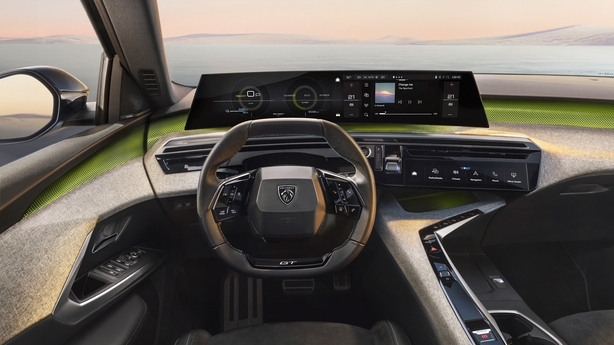The seven-seat car market is a limited one, yet queries about seven-seat options are among the most common we receive from readers seeking a practical family car that covers all the bases.
When it comes to seven-seater electric cars the market is even more limited - and the prices eye-watering. At the moment, there are options such as the Kia EV9, which starts at €77,500 and Volvo’s XC90, which starts at just under €100,000, putting them beyond the reach of most families.
With Peugeot’s launch of the new 5008 EV, the French manufacturer has an opportunity to bring in a seven-seater that is more affordable than bigger and pricier competitors.
The question is just how affordable Peugeot can make this car and can it bring it in at a more accessible price? Given that EV sales are falling and prices dropping, this is going to be a very competitive challenge.

All seven seat cars are a compromise. Yes, you get the extra row of two seats in the rear but this presents challenges for boot space. Unless you build the car with a very long wheelbase - huge, even - you lose that capacity when the third row of seats are in use. So, they are really designed for occasional use. When those seats are in use, you’ll get little more than a couple of shoppings bags behind them.
In the case of 5008, that space is a limited 290 litres. However, if you are not using the rearmost two seats, the car can be configured into a pretty enormous space. Another plus is the fact that outer middle seats can tilt and slide, so you can configure everything to maximise space.
This 5008 EV is a take on the familiar in that it is quite similar to the existing 3008 SUV, but has less of that car’s sloping rear roofline elements and is a bit boxier. That said, it has a quite an innovative design from the front and side perspectives.

The claw-shaped LED lights at the front give it a bit of extra character too. The design of the wheels is also quite distinctive and adds to the car’s profile.
The car is 1.79 metres long and 1.7 metres tall, with a width of 2.1 metres.
It arrives towards the end of this year but no prices have been determined yet. If Peugeot is to fill this niche space price will be a significant consideration.
There will be two EV versions. The entry-level one comes with a 73 kWh battery (210 BHP) and a claimed range of 502 kilometres. An extended range version with a 96 kWh battery (230 BHP) has a claimed range 660 kilometres. However, I have to keep stressing that claimed ranges need to be viewed with caution as we wait for real-world consumption figures.
A heat pump to improve battery efficiency is also standard.
The clever seat configurations are not the only attraction inside the car. The Stellantis Group, which includes Opel and Citroen, seems to have caught up with its competitors when it comes to onboard tech.

Instead of the rather dated screens and software of other models, we now have a 21" curved screen that 'floats' above the dashboard. It’s a marked improvement on what has gone before and both driver information and infotainment are housed in one. It’s also a lot more intuitive to use and the graphics are refreshingly clear - a big improvement all 'round and badly needed.
A tweed-look cloth surround on panels and the dashboard gives the car a pretty premium feel too.
A preview drive revealed the car to be both comfortable and spacious. There is plenty of head and legroom up front and the rear is cleverly thought out too.
You can adjust the regenerative braking system with paddles at the front of the steering wheel, which adds to battery performance.
A 1.2 petrol hybrid will also be available from launch and a PHEV is due next year. Peugeot claims this PHEV will deliver 170 km's of electric range at motorway speeds of up to 130 KPH which, if it does, will represent something of an EV milestone.

